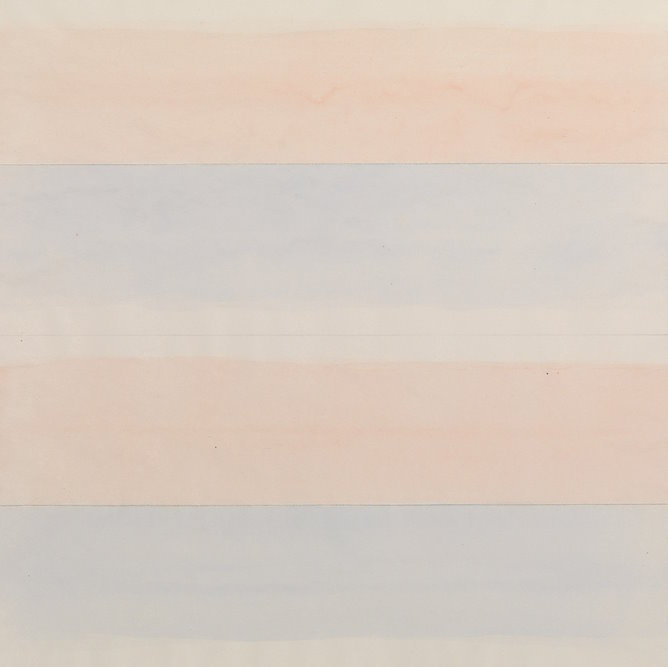created, $=dv.current().file.ctime & modified, =this.modified
Quote from Agnes Martin in documentary “With My Back to the World”
I say that I paint with my back to the world, because if you wake up in the morning and you feel very happy about nothing, no cause, that’s what I paint about, that sudden emotion that we feel without cause in this world and I’m hoping that people when they respond to them will realize that they make responses that are completely abstract, that their lives are broader than they think.
A creative mind is a mind that is modest enough to ask for help. It isn’t in our minds already. If you want to do something you have to ask yourself how can I do this?
I want to make a painting about instant love. Then I know what to look for in my mind.
Agnes Martin was one of the lesser-known abstract painters of the second New York School. This is largely because she was a woman working in a male-dominated field. It’s also because her paintings didn’t really look like other AbEx paintings so people didn’t know what to make of them.

Much is made of Martin’s Buddhism. In her personal writings she often talks about haiku and the profundity of things that are ‘simple’.
I think it’s a problem to try and equate the minimalist approach with spirituality or self-help. These are consumer fads that don’t help to explain the work’s staying power. What I respond to in Agnes Martin is the way she turns impersonality into a harmonious structure. The marks seem not only anonymous but autonomous—the very opposite of a personal autograph or mark making a la Manet. They don’t remind me of anyone else’s handling including similar minimalist painters like Robert Ryman. And this is important because, historically, painters are always trying very hard to make it seem like their marks mean something, to emote, to symbolize, when in actual fact they mean absolutely nothing at all. Does this sound moralistic? After all, it’s common to see loose marks described as romantic and imprecise whereas sharp ones are classical and architectural.
Martin was publicly known to have schizophrenia, although it was undocumented until 1962. She even once opted for electric shock therapy for treatment at Bellevue Hospital in New York.\
Martin praised Mark Rothko for having “reached zero so that nothing could stand in the way of truth”. Following his example Martin also pared down to the most reductive elements to encourage a perception of perfection and to emphasize transcendent reality.[
Loving love
Painted late in her career, Agnes Martin’s Loving Love (1999) retains the geometric appearance of the artist’s mature work. However, with its two soft stripes in blue and white that bisect the monochromatic pale blue canvas, here Martin (1912–2004) distilled the horizontality present in many of her striped paintings of the preceding two decades.
Indeed, Loving Love’s subtle blue tones and faint graphite lines invite unhurried reflection, conveying a sense of solitude that is present throughout much of the artist’s work. Although of a more intimate scale, this canvas nevertheless preserves the expansive and serene quality of Martin’s earlier paintings.